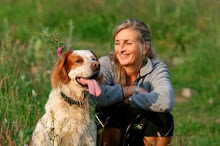 Amongst the many varieties of cats available as household pets, there's no doubt which one reigns supreme in the popularity department - the moggie! And the much-loved mog is top of the pops for a very good reason. For this basic, no frills feline with its unsophisticated charm has been part of the very wallpaper of our lives for as far back as we can remember
Amongst the many varieties of cats available as household pets, there's no doubt which one reigns supreme in the popularity department - the moggie! And the much-loved mog is top of the pops for a very good reason. For this basic, no frills feline with its unsophisticated charm has been part of the very wallpaper of our lives for as far back as we can remember
Most of us grew up with a moggie, or at least shared our neighbourhood with one or more. They welcomed us home from school and played with us in the backyard - sometimes even suffering the indignity of being dressed up and wheeled around in a doll's pram! Many an Aussie photo album would bring back fond memories of family rituals which routinely included Puss in the proceedings.
Often we didn't purchase the family moggie - a kitten would be given to us by a neighbour or friend, or an adult cat would just wander into our yard one day and adopt us. Regardless of the lack of pomp and pageantry surrounding these cats, there was always something reassuring, not to mention downright comforting, about seeing them curled up contentedly in front of the fireplace or sunning themselves lazily on the windowsill or the front verandah. They reminded us of home - and life's simple pleasures.
Times have changed, but happily the knockabout Aussie mog is still very much a popular feature of our backyards and households. (It has been estimated that some 90% of Australia's 2.9 million pet cats are moggies). Although moggies do not conform to any standards –coming in a range of shapes and sizes plus a riot of attractive coat colours and patterns - there are certain common denominators. More often than not Aussie mogs are shorthairs (sometimes "fluffies", but seldom with much length of coat). Many are mackerel (striped) or blotched (blobs and swirls) tabbies, which tend to be medium sized and with a reasonably solid build.
Moggies are invariably extremely robust, hardy creatures. Their breeding, based for the most part on natural selection (unlike pampered purebreds there are few arranged "marriages" amongst mogs!) has left a legacy of hybrid vigour. Survival of the fittest has ensured a strong healthy lineage based on natural form and function.
This self-assured, no-fuss feline makes an undemanding pet. Easy to look after and easy to love, moggies fit well into our laid-back Aussie lifestyle - whether there just snoozing in the sun, playing with the kids, or joining the family for a backyard "barbie". Nothing if not adaptable, they are just as much at home in the city or country, making delightful companions for folk of all ages.
The nick-name of moggie is variously attributed to a British dialect variation of the word "Maggie" which originally meant a disheveled old woman, or the name given to a scruffy scarecrow. This tie-in may have had some relevance years back when moggies were more often than not unowned cats, but today's sleek specimens tend to be as well cared for as any of their pedigreed cousins. Nowadays moggie is just an affectionate term used to denote any nonpurebred domestic cat.
Owners may not be aware that they can in fact show their much-loved mogs. For further information about cat shows and exhibiting pet cats, people should contact their local cat club or feline controlling body.
One thing is for sure however, the moggie's lack of aristocratic ancestry will never stop it being "top cat" in the hearts and minds of millions of Australians.
Thursday, November 6, 2008
Much Loved Moggies
Posted by Tamara Shardlow at 1:22 PM
Labels: cat breeds, cats, Human Companion Animal Bond, kittens
Subscribe to:
Post Comments (Atom)







2 comments:
Shame this affection doesn't extend to semi-owned and feral 'moggies' who are just the same cats without a family.
Seems if you are unlucky enough to be homeless, you are also demoted from "top cat" to "pest to be killed".
Shel
Many commentators and experts say that truly non-owned cats that people feed are probably a self-sustaining population, as few are desexed. Ecologically they might be compared to magpies or butcher birds (people like them and feed them, but don't own them!).
Feral cats, are also self-sustaining, but tend to survive as truly "wild" creatures, with no reliance on people whatsoever.
The interchange between these subpopulations of cats is very poorly understood.
You raise an interesting point about the role of "ownership" on the potential fate of a cat.
Cats remain a highly popular pet in Australia - and deservedly so in my view. About one quarter of Australian households one at least one cat.
Tim
Post a Comment